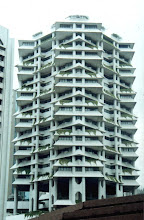 Borobudur, one of the greatest of all monuments to Buddha, built during the Syailendra dynasty, which ruled from the middle of the eight century to the middle of the ninth. sitting majestical on the Menoreh hill in the regency of Magelang, Central Java, Borobudur is the largest of its kind in the southtern hemisphere, with around 500 stupas and 500 life-sized Buddhas, each hewn from a single boulder. On the ten terraces there are three miles of intensive instructions and devotions, leading to the top and the terrace of Absolute Reality.
Borobudur, one of the greatest of all monuments to Buddha, built during the Syailendra dynasty, which ruled from the middle of the eight century to the middle of the ninth. sitting majestical on the Menoreh hill in the regency of Magelang, Central Java, Borobudur is the largest of its kind in the southtern hemisphere, with around 500 stupas and 500 life-sized Buddhas, each hewn from a single boulder. On the ten terraces there are three miles of intensive instructions and devotions, leading to the top and the terrace of Absolute Reality. Built on a low (c. 45 feet) hill rising from a wide plain, Candi Borobudur looks like a low dome. It has nine levels. The lowest level functions as the base of the structure, with a square floor plan, each side measuring 370 feet in leght, and projections on the flour side. The plain walls of this base rise 12 feet in height. The second level recedes 23 feet from the edge of the base, so that space for a wide processional path created around the entire building.
Built on a low (c. 45 feet) hill rising from a wide plain, Candi Borobudur looks like a low dome. It has nine levels. The lowest level functions as the base of the structure, with a square floor plan, each side measuring 370 feet in leght, and projections on the flour side. The plain walls of this base rise 12 feet in height. The second level recedes 23 feet from the edge of the base, so that space for a wide processional path created around the entire building.
The diffrent treatment of the lower, middle, and upper levels of Candi Borobudur reflects a typically Buddhist three-part division of the universe as the Indonesians imagened it to be. The lower level represent the kamadhatu, the Sphere of Desire, in which the human spirit is still chained to greed. Above it lies the rupadhatu, the Sphere of Form, in which the human spirit has succeeded in liberating itself froom greed, but in which it is still unable to trancend the phenomenal world. The upper part, consisting of the circular terraces, is the arupadhatu, the Sphere of formlessness, in which the liberated human spirit has left all earth consideration behind.

